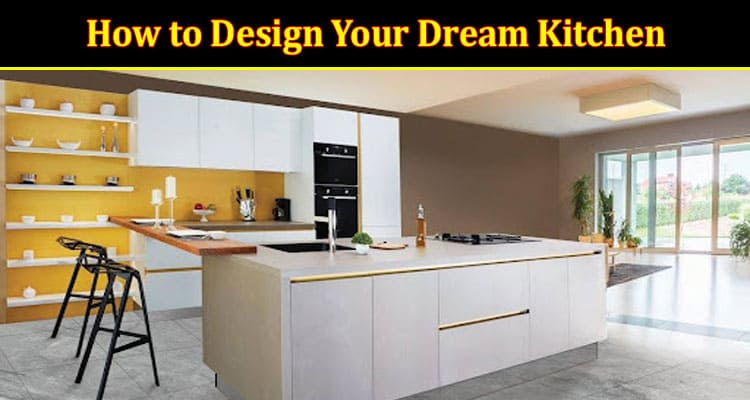Having a beautifully designed kitchen that meets your cooking and entertaining needs can make spending time in the kitchen a true joy. With some thoughtful planning and design, you can create your ideal culinary space. Follow this step-by-step guide to design the kitchen of your dreams.
Define Your Needs
Start by thinking about how you use your kitchen and what you would change about your current space. Consider aspects like:
- Cooking habits – Do you bake often or cook mainly simple meals? Do you need more prep space or storage for small appliances?
- Entertaining – Will you host large dinner parties or have mainly casual gatherings? Do you need space for multiple cooks?
- Workflow – Identify work triangles between main work zones like the sink, fridge and stove. Minimise crossover for better efficiency.
- Storage – Assess your storage needs for food, dishes, utensils and more. Include places to store everyday items within easy reach.
- Style – Decide the look you want, like modern, country or contemporary. This will inform your material and finish choices.
Choose the Right Layout
With your needs in mind, think about the ideal layout for workflow, storage and style. Common kitchen layouts include:
- Galley – A single wall of cabinets and appliances, efficient use of small spaces
- L-Shaped – Counters and cabinets on perpendicular walls, classic and efficient
- U-Shaped – Cabinets and counters on three walls, accessible work zones
- Island – Adds accessible counters and storage in an open floorplan
Select Surfaces and Materials
Now it’s time to choose materials that are durable, easy to clean, and suit your style.
- Countertops – Popular options include granite, quartz, laminate and solid surface. Visit showrooms to see counters in person.
- Cabinets – Consider materials like wood, painted wood or thermofoil. Choose durable finishes that fit your look.
- Backsplash – Glass, ceramic tile or natural stone are great backsplash materials to protect walls and add visual interest.
- Flooring – Wood, tile, vinyl and linoleum are good kitchen flooring options. Focus on finding durable and easy to clean materials.
Get Help from the Pros
Unless you’re an expert, get help from kitchen design professionals when installing complex elements like electrical, plumbing, cabinetry, lighting and ventilation.
- A contractor can manage the whole project and subcontractors. They’ll ensure proper installation and compliance with building codes.
- Kitchen designers can help customise cabinetry and create an efficient and gorgeous layout tailored to your cooking and style needs.
- Lighting designers can install task lighting and ambient fixtures to make the kitchen both functional and beautiful.
Design for Accessibility
Think about accessibility needs when designing your kitchen. Consider details like:
- Varying counter heights for users of different heights
- Lower cabinet pull-outs and Lazy Susans for easy access
- Contrasting countertop edges to clearly define workspace
- Lever-style handles that are easy to grip and open
Add Personal Touches
Add final flourishes to make the kitchen your own. Ideas include:
- Display collectables, cookbooks or potted herbs on open shelves
- Add a message board, chalkboard wall or framed photos
- Use your favourite colours on accent walls or small appliances
Enjoy Your Dream Kitchen
With thoughtful planning and design, you can create the kitchen of your dreams – a beautiful and efficient space for cooking, gathering and making memories. The investment is well worth having a kitchen that truly suits your needs and style for years to come. Follow this guide to start creating your perfect culinary oasis.

